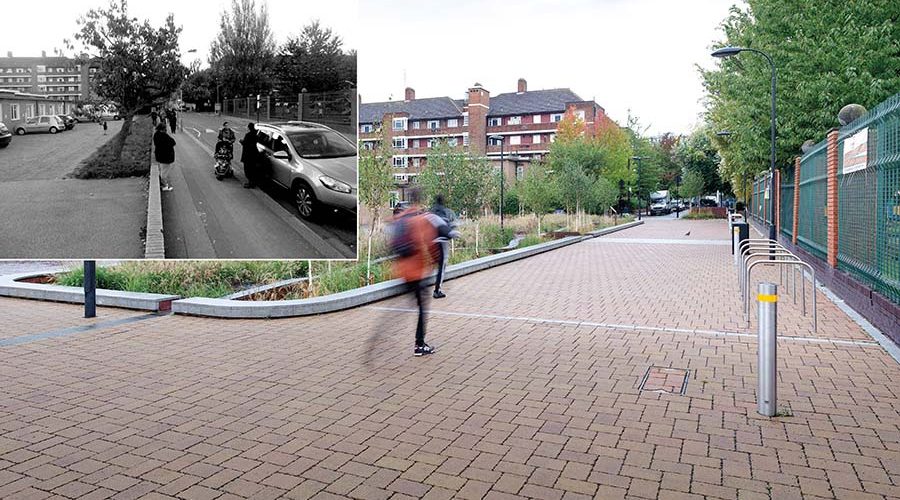Announced in May last year, the Government’s £2bn post-pandemic investment package for cycling and walking provides a unique opportunity to transform the public realm. But this – and other recent Government initiatives – also herald a new approach to hard-landscape and the external spaces around buildings as well, as the trade association Interpave explains.
Interpave
Although responding to the need for more space highlighted by the COVID-19 crisis, Government initiatives are also opportunities to address other long-outstanding issues including flooding, vehicular pollution, urban heat island effects and climate change. Both well-established and innovative techniques using modular concrete paving systems offer adaptable, low-intervention, retrofit solutions to meet these new challenges, demonstrated in case studies from Interpave, via www.paving.org.uk.
Understandably, local authorities may feel reluctant to commit to expensive and disruptive permanent changes in these uncertain times. Some of the resulting temporary measures – often involving cones and barriers – have proven unappealing and unpopular, and now need addressing. In contrast, factory-produced modular concrete paving and kerb units deliver fast, low-cost, retrofit installation with limited intervention work. Subsequently, layouts can easily be altered and units taken up and re-used, if needed to meet changing needs.
Adaptable paving
These principles apply to all precast concrete block, flag and kerb products. Precast paving products are fully engineered and manufactured under sustainable, controlled conditions – consistently providing accurate sizes, colours and textures, as well as slip/skid resistance and other performance characteristics. The distinct, modular units and designed variations in colour, texture and shape can break up areas giving visual interest and a human scale not possible with monotonous, formless materials.
So, precast concrete paving offers a unique combination of predictability, safety and accessibility for all, with scope for endless variety in shape, scale, colour and texture giving designers freedom to enrich the urban environment. Good paving design helps create ‘places for people’ and will help encourage walking and cycling. It is also central to the rejuvenation of our town centres and suburbs as well.
Multifunctional surfaces for the future
The multifunctionality potential of precast paving is expanded further with concrete block permeable paving – uniquely placed as an essential, multifunctional sustainable drainage (SuDS) technique. In addition to safe, attractive paving for any application, it also provides an inherent drainage system requiring no additional land take for water storage, treatment or conveyance. It eliminates pipework, gulleys and manholes, and generally costs less than conventional drainage and paving.
But permeable paving also traps vehicle pollution from surface water run-off before it reaches our rivers and streams. It can also help reduce the urban heat island effect, with evaporation of rainwater within the paving. And this is in addition to the high albedo – or heat reflectance factor – available with concrete block or flag paving generally, compared with asphalt.
Recent regeneration projects – one shown here – have demonstrated the benefits of retrofitting concrete bock permeable paving as a thin overlay, replacing conventional street surfaces and drainage, over existing paving bases. This innovative approach opens up real potential for fresh, attractive and adaptable surfaces delivering multiple benefits to existing streets and hard landscaped areas in the post-pandemic era.








